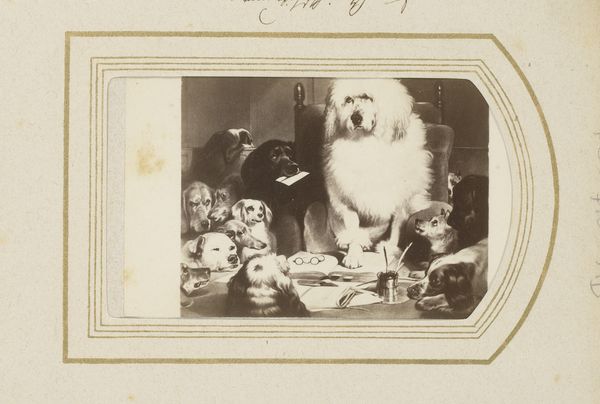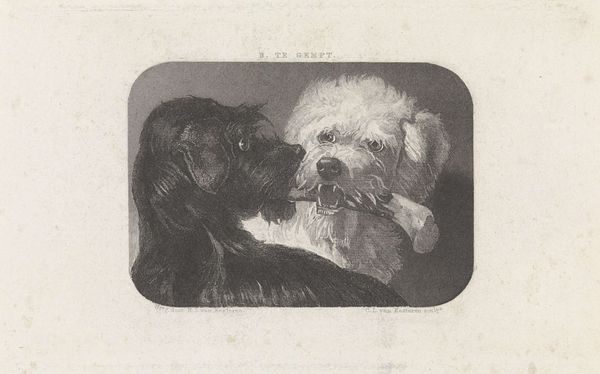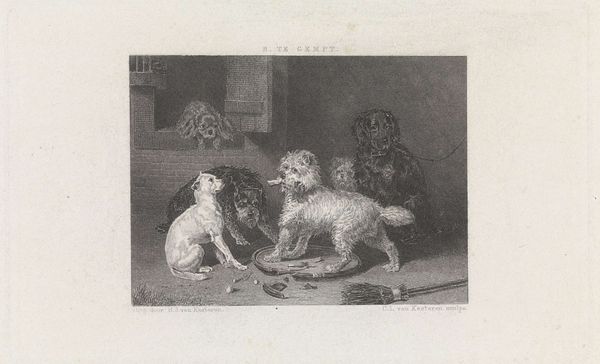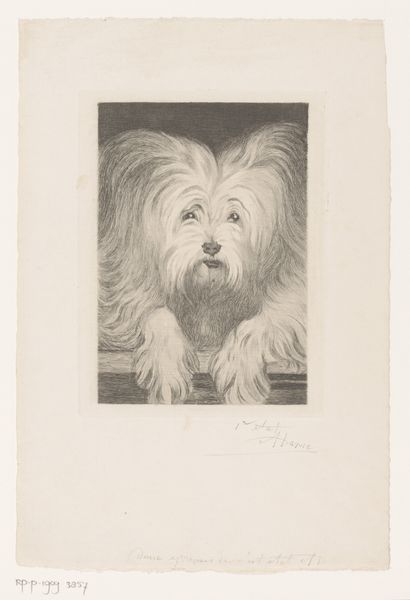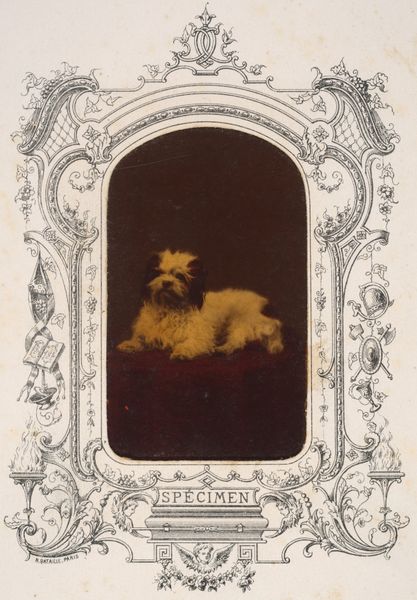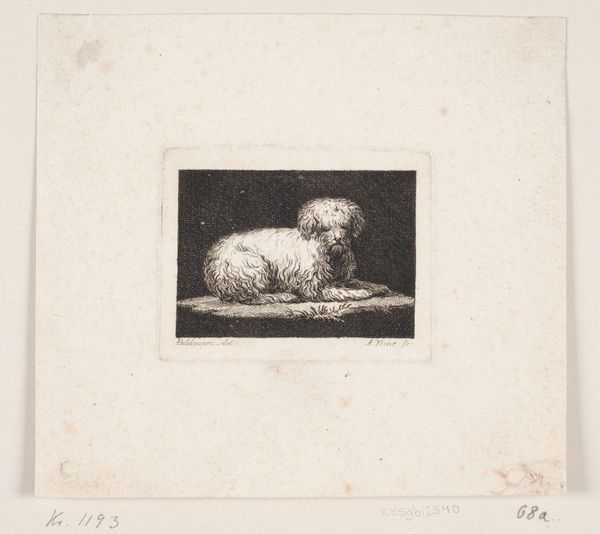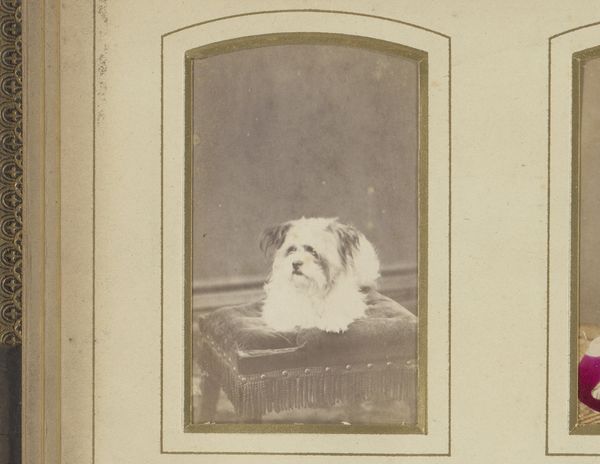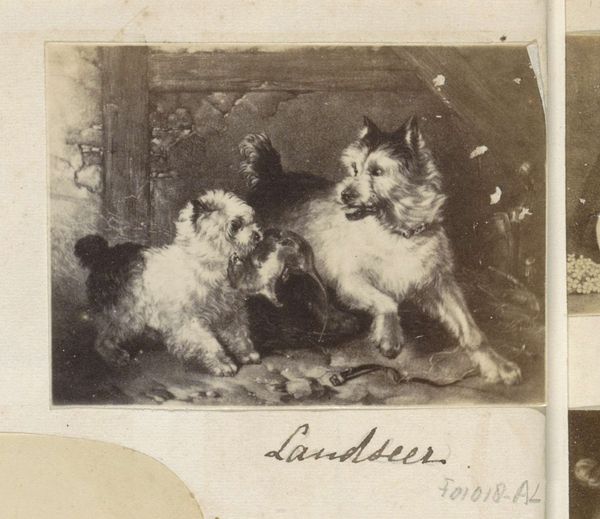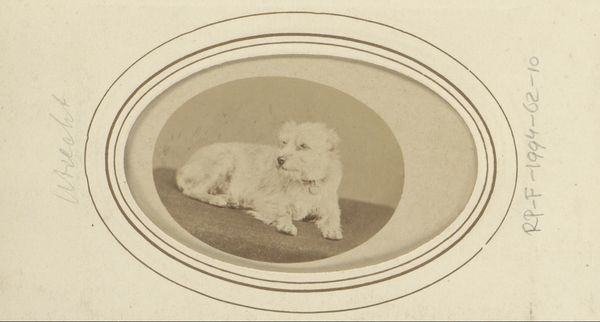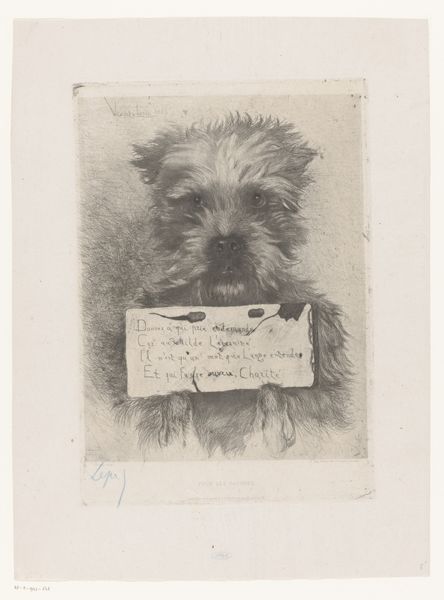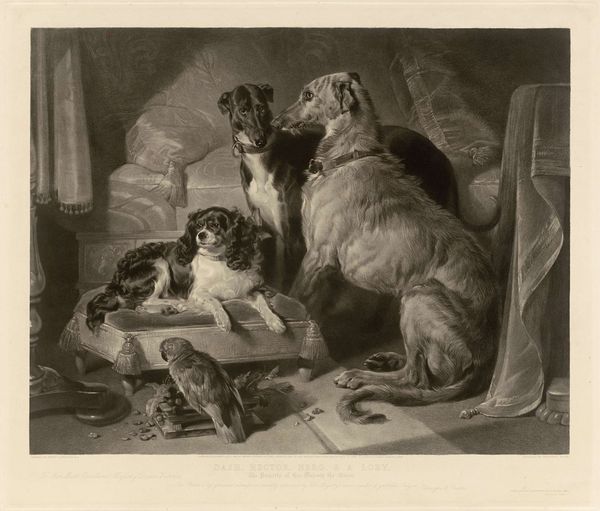
Fotoreproductie van een prent naar een schilderij van Edwin Henry Landseer c. 1860 - 1870
0:00
0:00
print, photography
#
16_19th-century
#
photo restoration
#
animal
# print
#
pencil sketch
#
dog
#
old engraving style
#
figuration
#
photography
#
19th century
#
genre-painting
Dimensions: height 110 mm, width 120 mm
Copyright: Rijks Museum: Open Domain
Curator: This is a photographic reproduction of a print, made after a painting by Edwin Henry Landseer, dating back to the mid-19th century, roughly between 1860 and 1870. Editor: My first impression? It’s humorous and slightly absurd. All these dogs gathered around a table… it almost feels like a canine cabinet meeting. The central figure, that poodle, has such a regal bearing. Curator: Indeed. Landseer was known for his anthropomorphic depictions of animals, and his paintings, popular in Victorian England, often commented on social structures and behaviors. His work, disseminated through reproductions like this print, reached a wide audience, shaping popular perceptions of animals and their roles in society. Editor: The poodle certainly plays the part of authority figure to a T. The gathering of different dog breeds around the table suggests different social strata. Look at their faces, they show deference, suspicion, perhaps even boredom! Do you think he might have wanted us to recognize a judicial setting, where one decides about right and wrong? Curator: Absolutely. "Laying Down the Law", as suggested by the text under the reproduction, serves as a satirical comment on legal proceedings and class dynamics. Consider the source and circulation of the original Landseer's art, particularly its integration into popular visual culture. The Victorian era saw a massive expansion in print media and visual representation in general, with images serving increasingly to reinforce social mores. The print brings to mind ideas of authority and order, while it simultaneously subverts those notions with the image of a dog “in charge”. Editor: So, we see how familiar symbols such as courtroom and judge iconography can take on different meanings based on the subject? Landseer here makes sure his artwork becomes highly memorable because it is funny! And still poignant today because of its humanistic value. It offers a fascinating window into Victorian society, reflecting its values, anxieties, and the way it used images to navigate the complexities of its own social fabric. Curator: Indeed. It makes us consider not only the status of art at the time, but more broadly how humor was weaponized, for lack of a better word, to create allegories around socio-economic matters of that era. Editor: Well said! It's really incredible how Landseer, even through this photo of a print, makes you think about power dynamics.
Comments
No comments
Be the first to comment and join the conversation on the ultimate creative platform.
